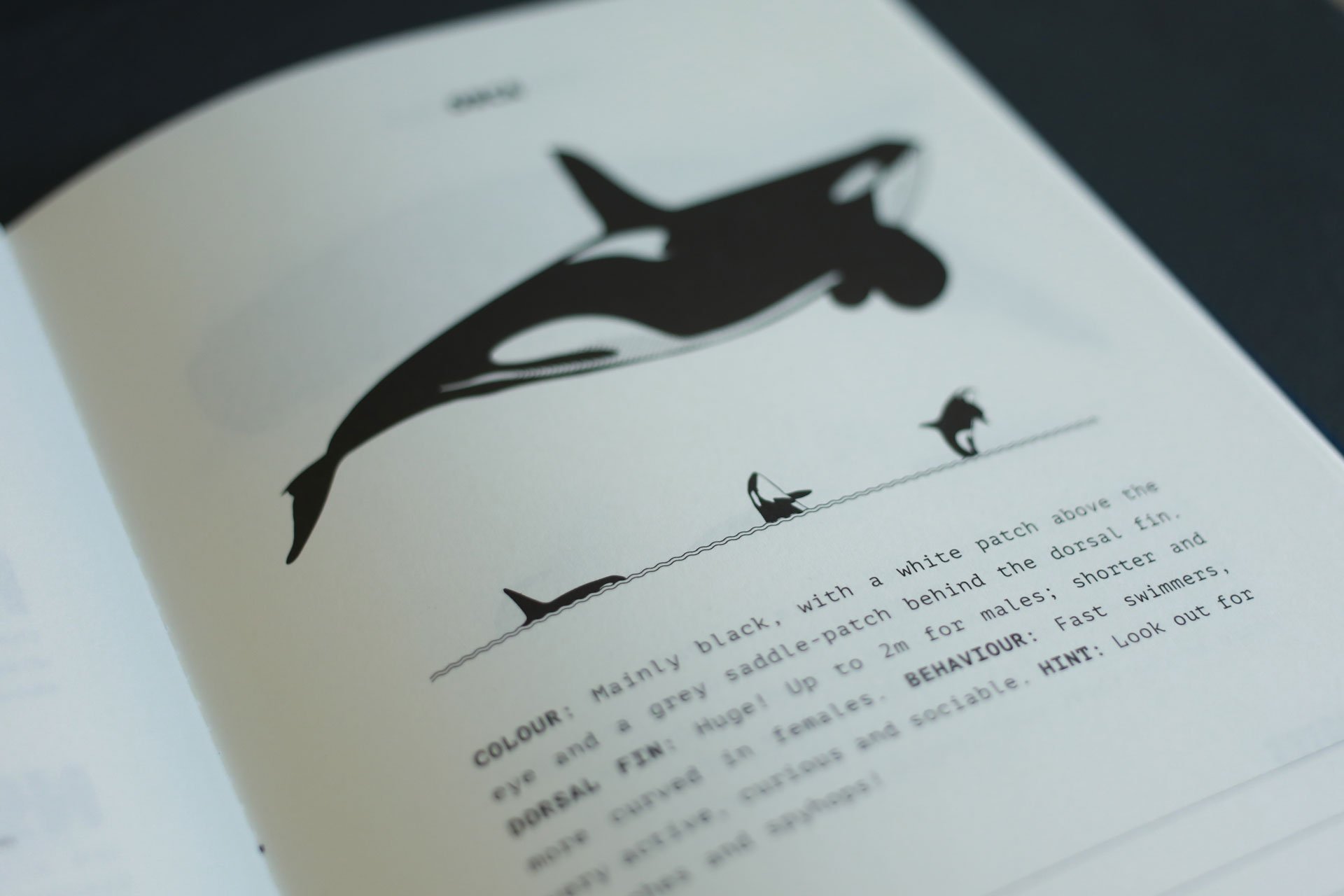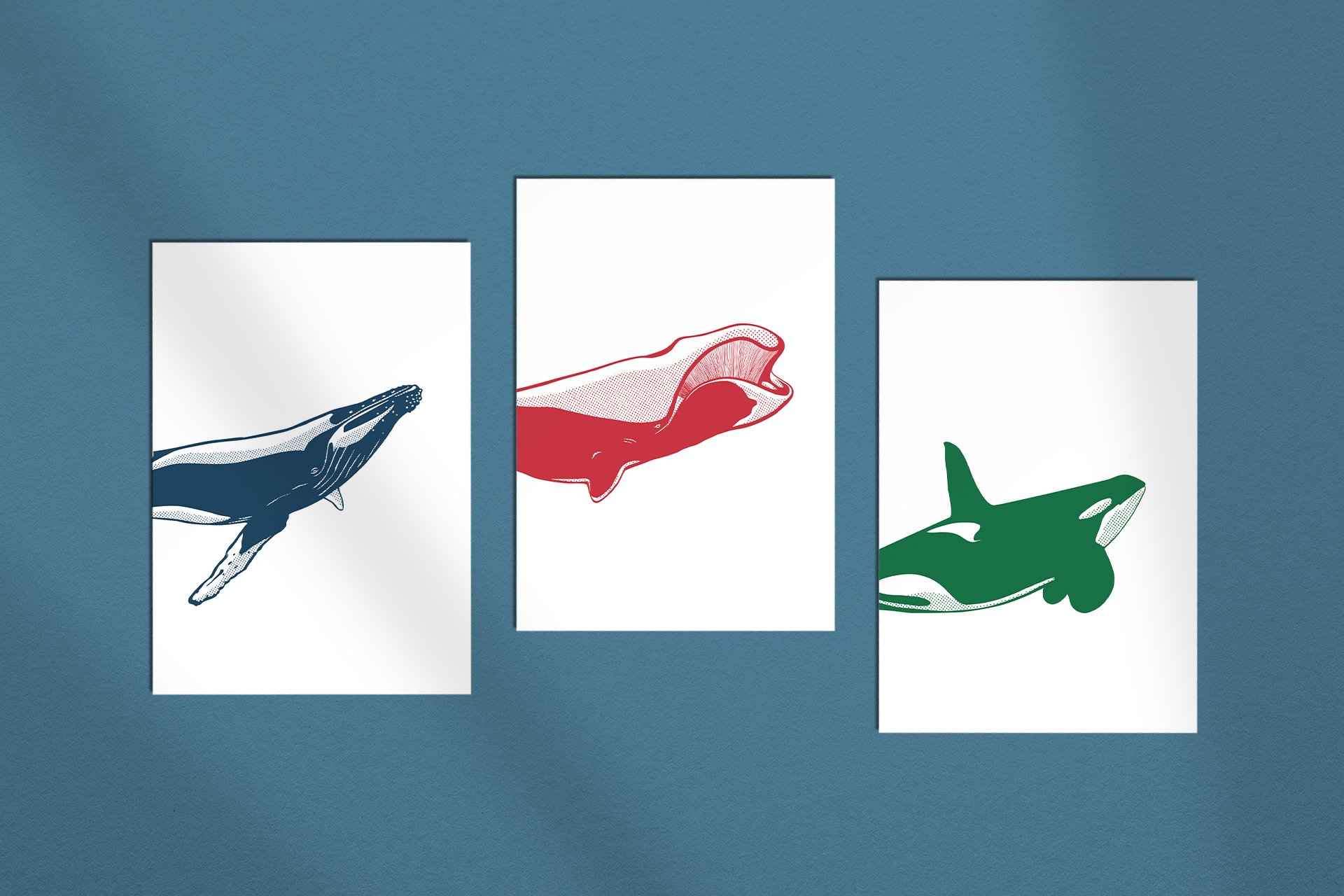Sperm WhALEs
The largest predators on the Planet. In Norway, Iceland, New Zealand and the Azores, they can be found close to coast.
Photo: Oliver Dirr / Whaletrips
REVIEW: Sperm Whales
Sperm whales are the largest predators in the world and have the largest head in the entire animal kingdom. They can dive up to three kilometres deep and thereby put almost all systems on standby.
Sperm whales are by far the best whales to start whale watching with. Firstly, sperm whales are the best known and most famous whales (Moby Dick!). Secondly, although sperm whales can only be observed in a few places in the world, those places are very reliable. Thirdly, they are easy to locate using hydrophones and even easier to identify thanks to their leftward sloping blow and their massive tail. And fourthly, they remain motionless on the surface for minutes after surfacing and almost always lift their flukes before diving down, which makes for the very best photos. Sperm whales are therefore the perfect whale-watching whales.
On the one hand.
On the other hand, sperm whales are also the only large whales with teeth and thus the largest toothed predators in the world. I'm not afraid to admit that I felt a little nervous when I stood in front of the life-size model of a 20-metre sperm whale in Andenes, Norway, knowing that I would be travelling in a 5-metre Zodiac inflatable boat over a deep-sea canyon full of sperm whales straight afterwards. A single sperm whale tooth is about the size of a fist, at least if you have a big fist – and the sperm whale has over 40 of these fist-sized teeth, which it uses to hunt for giant squid at depths of up to 2,000 metres, that sometimes put up a fierce fight, as the numerous scars on the huge whale heads prove.
Deep-sea canyon, giant squid, monster teeth. And you in the mini zodiac. That's enough to make you worry.
“During long dives, sperm whales can slow down their heartbeat, switch off organs that are not needed and, if necessary, collapse their lungs.”
It's good to know that sperm whales are absolutely peaceful and social, even if this was portrayed somewhat differently in „Moby-Dick". Basically, sperm whales are a bit like cows, only much smarter and more fascinating.
Sperm whales, for example, have the largest head in the entire animal kingdom, which can be up to 1/3 of their total length – a head the size of a pick-up truck. Inside is the largest brain in the entire animal kingdom (up to eight kilos), as well as a huge amount of a yellowish, waxy oil (spermaceti), for which sperm whales were hunted to the brink of extinction for centuries.
This oil is possibly used to control buoyancy during dives. It can be heated or cooled with the help of seawater and thus vary its density: At a higher density, the sperm whale sinks, at a lower density it rises. At least that's the theory – but whether and what role the large head really plays when diving has not yet been conclusively clarified.
In any case, sperm whales can dive to a depth of around two to three kilometres (!) and hold their breath for up to two hours (!). During long dives, the heartbeat slows down considerably and only the most important organs (heart and brain) are supplied with oxygen.
In extreme dives, the lungs can even collapse, so that the animal relies solely on the oxygen reserves in its muscles and blood. In such extreme situations, it is probably not a bad idea to have an in-built surfacing mechanism on board.
Sperm whales have the largest head in the entire animal kingdom – it is about the size of a standard pick-up truck.
The oil in the sperm whale's head also serves as an acoustic lens. In those depths where the sperm whale likes to travel, it is pitch dark and, like bats, the whale locates its prey using echolocation: It constantly emits short clicking sounds that are reflected by obstacles in front of it and are picked up again at lightning speed and then processed in the brain.
This allows a sperm whale to hunt for squid at high speed even in total darkness. However, the chase does not last too long: a sperm whale can send out such loud signals that it may even stun its prey for a short time.
Incidentally, sperm whales can also be easily located by whale watchers using these clicking sounds emitted during the hunt. Hydrophones are used to listen to the sea and as soon as the clicks stop underwater, the whale is about to surface.
Photo: Oliver Dirr / Whaletrips
Size
Males 12 to 20 metres, females 9 to 13 metres. Adult sperm whales can weigh up to 50 tonnes.
Colour
Grey to grey-black, sometimes also dark brown. Very rarely also grey or whitish – as in “Moby-Dick”.
FORM
Huge head, up to a third of the total length. Males are considerably larger and bulkier.
BLow
Medium-height, bushy blow (2 to 3 metres) that does not lean upwards, but diagonally to the left.
FIN
Very low fin far back on the back with adjoining bumps up to the tail.
FLUKE
Extremely strong tail with pointed, triangular fluke. Posterior edge straight, sometimes frayed.
Behaviour
Rests calmly at the surface after surfacing to rest for the next dive. Takes a little momentum before descending, then shows its fluke.
Dives
Usually dives for 20 to 50 minutes. If a sperm whale has submerged, there is no point in waiting, although it often reappears in the same place.
Numbers
Unknown.
Photo: Oliver Dirr / Whaletrips
CHECKLIST: Sperm Whales
With their massive tails and left-facing blow, sperm whales are absolutely unmistakable.
Usually 1 to 10 animals are encountered, but occasionally larger groups of 100 or more sperm whales can be seen. There are smaller bachelor groups with single, young males and larger breeding schools with numerous females and their offspring, which usually consist of 20 to 25 animals. Older males usually live alone or in groups of up to six animals and only join the females during the breeding season.
The powerful and, especially in profile, very massive tail with the triangular fluke can be recognised from a distance. Sperm whales are also very easy to recognise by their blow, which is pointed diagonally to the left.
“After surfacing, sperm whales rest on the surface like a huge piece of driftwood. Before they dive down again, they take a bit of a swing. And almost always they lift their flukes.”
After surfacing, they usually remain completely motionless at the surface for 15 to 20 minutes to rest. During this time, they look like a large piece of driftwood, especially as you can't see much more than the huge, rectangular head at the surface.
Before descending again, the sperm whale first stretches its back significantly and gains some momentum, even disappearing completely below the surface for a short time. After accelerating in this way, it resurfaces, with its head, back and hump clearly visible. After making a clear bend, the sperm whale glides down almost vertically and lifts its fluke high above the water.
After a dive of just under an hour at a depth of more than 1,000 metres, sperm whales are usually too exhausted for breaches and other activities at the surface. Nevertheless, with a bit of luck, sperm whales can also be observed breaching or spy-hopping.
Photo: Oliver Dirr / Whaletrips
Where and when: Sperm Whales
Norway and New Zealand are probably the best places to spot sperm whales. There are also quite good opportunities on the Azores and in western Iceland.
Sperm whales live oceanically in deep waters of at least 1,000 metres – females and juveniles exclusively in warmer waters (at least 15°C), males also in colder, polar regions.
There are not many places in the world where it is deep enough for sperm whales close to the coast. You have good chances in Norway, New Zealand, Iceland and the Azores, where populations are resident and therefore very reliable.
The ideal companion for your next whale trip: In our shop you will find our TRAVEL NOTES in five great colours – with the most important whale information for your trip and plenty of space for your own notes, observations and memories. Order now!
In Norway and New Zealand, sperm whales can be found all year round. Only males live there; as soon as they are big and strong enough, they move to warmer waters to mate. Until then, they remain in their hunting grounds all year round. Sperm whale safaris start in Norway from Andenes and in New Zealand from Kaikoura.
Some sperm whales live in the Mediterranean off France, Italy and Spain, as well as off the Canary Islands, where they constantly migrate back and forth between Lanzarote, Tenerife and La Gomera. There is also a good chance of spotting them in the Ligurian Sea and the Strait of Gibraltar. You also have very good chances in the Dominican Republic, where you will mainly encounter females with their young.
Sperm whales are also regularly spotted in Iceland in summer, especially off the Snaefellsnes peninsula in the north-west of the island.
Even more Whales
〰️
Even more Whales 〰️
Whaletrips Shop
The ideal Companion for your whale trip
All the whale facts you need while on the road – with plenty of space for own thoughts and observations!
Whaletrips Shop
Our Whales as Cards and Stickers
Colourful, finely illustrated, ready to stick on: Our whales are now available as stickers and greeting cards!
Whaletrips Shop
Beautiful whale Notebooks
Whether for travelling or at home: our high-quality whale notebooks come in five beautiful colours!
Whaletrips Shop
Our favourite photos for your home
Brightens any wall: a selection of our favourite motifs is available as elegant fine art print for your home.











